My Blog Posts:
For my learning project blog posts, I provided different websites and videos that are useful for learning the ukulele. I also included videos and websites that I did not find as useful, so people with similar learning styles as me will know which videos and websites that they may wish to avoid. When sharing these websites and videos, I included a small review of them, so readers knew what to expect if they chose to use the website.
For my other EDTC300 blog posts, I discussed my thoughts on different readings and videos that we looked at over the semester, and I hope that my contributions aided others’ learning. Specifically, I touched on Powtoon, so I hope that my peers were able to read that post and have a new online tool that they can use.
Here is the link to my blog post on Powtoon: Blog Post on Powtoon
Blog Post Comments:
Earlier on in the semester, I commented on Ava’s blog post about Powtoon. She struggled with exporting iPhone files (like photos and videos) into Powtoon. I told her that I have never found an online tool or website where iPhone file types were compatible. I gave her a tip that I do often, and this tip is accessing your camera roll through Snapchat memories and sending files through there as they typically send in a compatible file type. Also, I told her how I uploaded my Powtoon to help her avoid extra steps in the future.
Here is a screenshot of my comment:
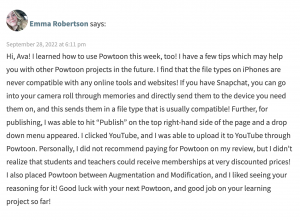
While I did comment on a few other people’s blog posts, this was the main one where I gave helpful tips. I am not sure which other blog posts I commented on to find screenshots, but I know that they were mainly encouraging comments where I mentioned something that I liked in their post and wished them luck with their future posts.
Twitter:
Here are screenshots of some of the tweets, retweets, and comments that I made throughout this semester that were beneficial or helpful to others, or that added to a conversation. I retweeted a few more things than what I have shared here, but I find these screenshots to be the highlights of my Twitter account.
2022-09-17 (retweet)
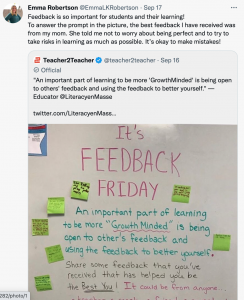
2022-09-18 (comments)


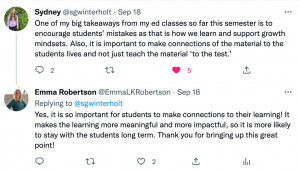
2022-09-19 (retweets)

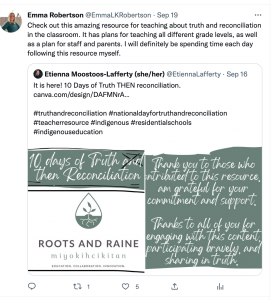
2022-09-21 (comment)

2022-09-25 (comment)

2022-09-28 (retweet)

2022-11-30 (tweet and retweet)

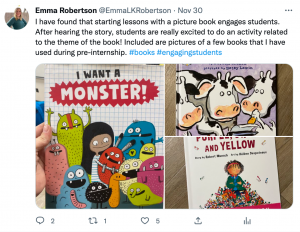
2022-12-07 (tweet, comments, and retweet)


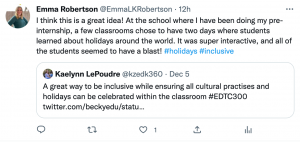
With Twitter, I struggled to make contributions once my pre-internship started. I would have liked to prioritize it more, and I plan to continue using the app after this semester. At the beginning of the semester, I was making fairly regular comments and posts on Twitter; however, over the months of October and November, I typically only posted on Twitter when I made a blog post. As the semester ended, I tried to post a bit more and interact with others more on Twitter. It was definitely a learning curve, and probably the most difficult thing for me to maintain this semester!
Also, I never joined a #saskedchat, and I would have liked to. I ended up being busy on most Thursday nights, but I still have a goal to join in on one in the future.
Discord and Snapchat:
I made no discord contributions. I meant to help a few times; however, I was always too late and someone else had already helped out. Often, I did not check my discord notifications until much later, so if I were to change something, I would check my notifications for the app more frequently.
While I did not help out on discord, I was part of a Snapchat group chat with two of my peers for help in this class. This was a space where we could ask questions, and as a group, we met up on some Mondays to work on the course and motivate one another. This was very helpful. As I was part of this Snapchat group, and I had many friends in the class who I knew from previous classes, I never asked questions on Discord, either.
Conclusion:
That concludes my final networked learning post. I hope that I was able to help out a few others in EDTC300 with my contributions to the course as I know that my fellow peers helped me with my learning this semester.
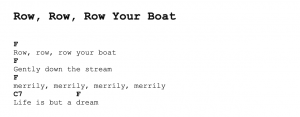
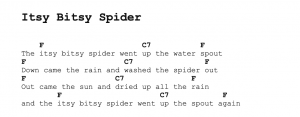

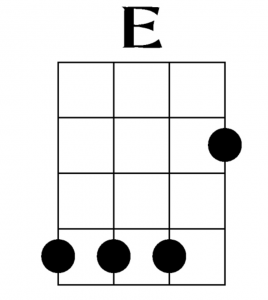


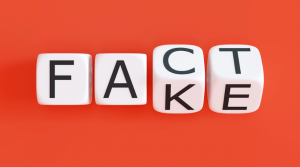
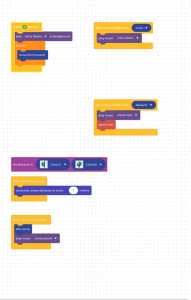




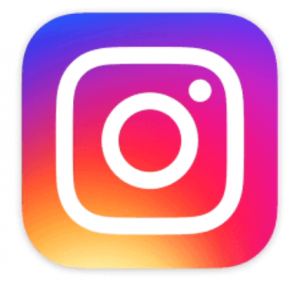


Recent Comments